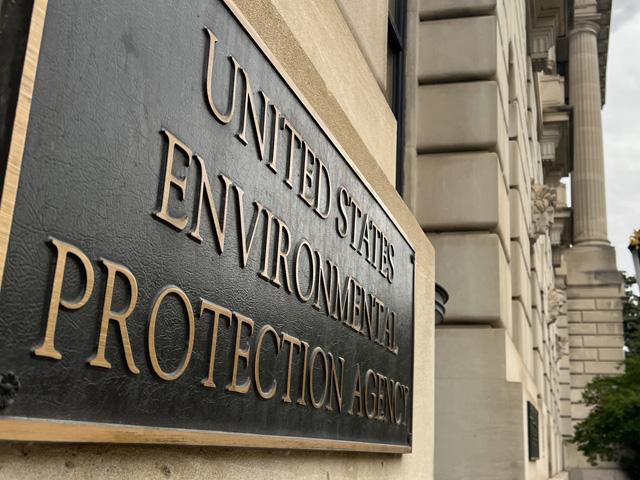EPA Tailpipe Rule Litigation on Hold
Lawsuits on Biden Tailpipe Rule on Hold in Appeals Court Pending Trump Review
LINCOLN, Neb. (DTN) -- A federal appeals court in Washington, D.C., has paused a wide-reaching lawsuit against the Biden administration's tailpipe emissions rule that states, and agriculture groups have argued amounts to an electric-vehicle mandate.
In one of his first executive orders signed this year, President Donald Trump began to take steps to eliminate what he has called the EV mandate.
In April 2024, attorneys general in 25 states along with state politicians, petroleum and automobile interests sued the Biden administration asking the U.S. Court of Appeals for the District of Columbia Circuit to throw out the rule.
On Feb. 18, 2025, the court issued an order suspending various deadlines in the case.
Matthew W. Morrison, a D.C.-based attorney representing agriculture and biofuels interests in the case, told an industry audience at the National Ethanol Conference in Nashville, Tennessee, last week that the ag groups wanted to give the new Trump administration time to decide whether it will defend the tailpipe rule.
In a day-one executive order, Trump announced his policy of "eliminating the 'electric vehicle mandate' and promoting true consumer choice, which is essential for economic growth and innovation, by removing regulatory barriers to motor vehicle access; by ensuring a level regulatory playing field for consumer choice in vehicles; and by considering the elimination of unfair subsidies and other ill-conceived government-imposed market distortions that favor EVs over other technologies and effectively mandate their purchase by individuals, private businesses, and government entities alike."
P[L1] D[0x0] M[300x250] OOP[F] ADUNIT[] T[]
Attorneys for the petitioners in the case, including Morrison, told the court in a motion to hold the case in abeyance. "After EPA reevaluates the standards, the positions taken by the agency in this litigation may no longer reflect its ultimate conclusions. And if the agency reconsiders its approach, the standards at issue here could soon be replaced altogether, thus potentially rendering the present dispute moot."
The light and medium-duty vehicle rule was finalized in mid-April 2024 and would have gone into effect in 2027.
The rule is meant to reduce greenhouse gas emissions from light-duty vehicles, which account for about 16.5% of the country's greenhouse gases. By 2032, new vehicles would have been required to have 44% to 50% lower emissions than 2026 vehicles.
The rule, if fully implemented, would reduce emissions by 7.2 billion tons by the end of 2055. EPA officials maintained the rule did not favor one technology, but it focuses heavily on electric capabilities while only barely mentioning other options for reducing emissions such as increased use of biofuels.
The Pacific Legal Foundation at the end of 2024 joined the Renewable Fuels Association, National Farmers Union, the American Farm Bureau Federation, the National Association of Convenience Stores, 14 state and national corn grower associations, numerous auto dealers, organizations representing trucking and shipping companies, manufacturing groups, energy trade associations, organized labor groups and other parties, https://www.dtnpf.com/….
The EPA faces a multitude of lawsuits on the rule that essentially has pushed biofuels out of the picture when it comes to reducing carbon emissions in the transportation sector.
The Pacific Legal Foundation argued in a court brief that the EPA tailpipe emissions rule was doing exactly what the Supreme Court said federal agencies cannot do when it ruled the so-called Chevron doctrine was unconstitutional.
The Chevron doctrine was struck down by the Supreme Court in Loper Bright Enterprises v Raimondo.
In that case, the court recognized Congress can empower federal agencies to "fill up the details of a statutory scheme."
The Pacific Legal Foundation said EPA's tailpipe rule is yet another example of the federal government overreaching.
Read more on DTN:
"Lawsuits Mount Over Emissions Rule," https://www.dtnpf.com/…
Todd Neeley can be reached at todd.neeley@dtn.com
Follow him on social platform X @DTNeeley
(c) Copyright 2025 DTN, LLC. All rights reserved.




